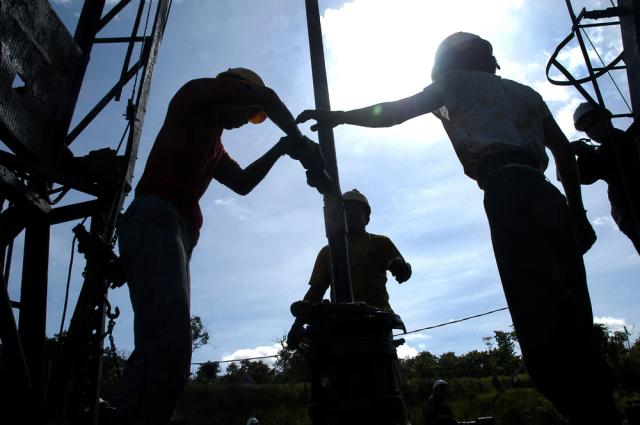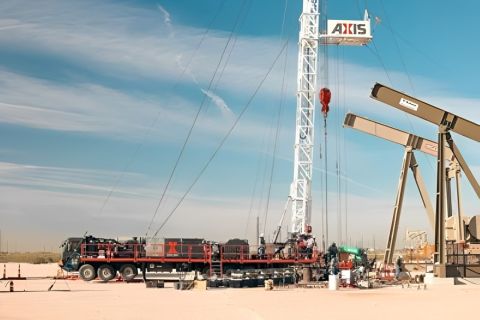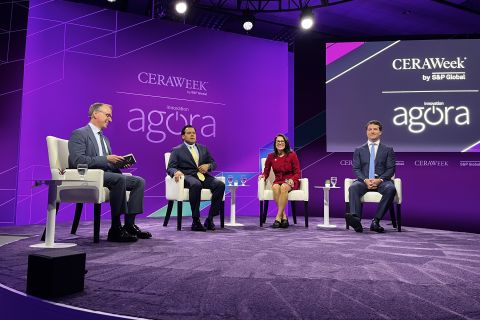
Indonesia's energy ministry has asked Pertamina to implement advanced EOR projects at its mature oil and gas fields to reverse falling production. (Source: Shutterstock.com)
Indonesia’s state-run PT Pertamina EP is preparing to launch an EOR project in the aging Tanjung Field in south Kalimantan, the first of eight fields identified for an oil production revival program.
The company will use surfactant polymer injection in the Tanjung Field to pump oil from reservoirs that can’t be extracted through the conventional methods.
Pertamina Upstream Director Dharmawan H. Samsu said a pilot polymer-based EOR project in the field showed positive results. “As a continuation, the main points of understanding between Pertamina and Repsol [junior partner] have been signed on the management of the EOR in Tanjung Field for its full scale, including the implementation of the surfactant polymer EOR.”
The operator will launch the full-scale EOR in the onshore field next year.
The polymer injection method was selected based on reservoir temperatures, reservoir fluids and geological conditions.
Polymer/chemical injection EOR is a proven technology that has been implemented in various fields across the world for more than 30 years. The method could recover an additional 25% of hydrocarbon reserves in place.
Tanjung, discovered in 1937 by Royal Dutch Shell, has been producing oil for over eight decades. It currently pumps less than 4,500 barrels of oil per day (bbl/d) with support of water flooding.
Pertamina Vice President Andi W. Bachtiar earlier said polymer injection would be economical, adding US$5 per barrel oil equivalent (boe) to the existing operational cost of $40 per BOE. “Therefore, it is still lower than the current global oil price [which is in the range of $60 to $70],” he said.
“For EOR in Tanjung, we estimate that in the next two to three years, production [from Tanjung] can increase four to five times of current production,” Bachtiar added.
The Tanjung EOR project, estimated to cost $116 million, is expected to increase oil production to 25,000 bbl/d in the next five years.
Revival Plans
Tanjung is one of the eight oil fields slated for EOR projects by Pertamina. The other fields are Sukowati, Rantau, Sago, Ramba, Jirak, Limau and Jatibarang.
The company will use surfactant polymer injection at Rantau, Sago, Jirak, and Limau, while CO2 will be used at the remaining three.
The operator has already started trials using the surfactant polymer in the Jirak and Rantau fields and CO2 at Jatibarang, Sukowati and Ramba. These fields will source CO2 produced from the nearby Jambaran-Tiung Biru (JTB) oil field.
“CO2 produced by JTB is not released into the air but is added again into the Sukowati reservoir. Thus, Sukowati’s pressure becomes stronger and production is expected to increase,” Samsu said.
Also, Pertamina is considering EOR for the mature fields in the Mahakam concession it acquired from Total in 2018. John Anis, general manager of Pertamina Hulu Mahakam, said a new study is being carried out to assess the characteristics of reservoirs and producing fields.
“We can do chemical or something because technology changes. We will do a pilot project,” Anis said recently.
The operator identified the mature Handil Field, which was discovered in 1974, to launch a polymer injection pilot study next year. It is the largest oil-producing field in the block and has hundreds of stacked hydrocarbon accumulations.
The previous operator Total had implemented water/gas injection EOR projects in several mature fields—including Handil, Tunu, Peciko,and Tambora—to maintain oil production. It even launched a chemical EOR Injection pilot project in Handil but shelved it due to low oil price.
Most of the fields are becoming mature. Exceptions are Stupa, Mandu, Jempang and Mentulang, which started production in 2012.
Pertamina earlier announced plans to launch an EOR project with the injection of polymer/chemicals in the aging Rokan Block before it takes over the concession from Chevron in 2021.
RELATED: Pertamina Pushes EOR Project In Rokan Before Chevron’s Exit
Ministerial Directive
In the absence of major discoveries in the recent past, Indonesia’s energy and mineral resources ministry is encouraging Pertamina and private companies to focus on maximizing production from existing fields in addition to allocating new blocks to developers.
The ministry has asked Pertamina to implement advanced EOR projects at its mature oil and gas fields to reverse falling production, which fell to 413,930 bbl/d in January-June 2019.
The national oil company operates 21 oil and gas fields across Indonesia, but most of them are mature fields.
Djoko Siswanto, the ministry’s director general of oil and gas, said Pertamina’s EOR projects are crucial to achieving the government’s production target of 1 million bbl/d by 2022, up from the current level of about 771,000 bbl/d.
“We are short of production, not short of oil. The oil is there, but we need technology to lift oil, one of which is EOR,” a ministry official said.
Recommended Reading
Tech Trends: AI Increasing Data Center Demand for Energy
2024-04-16 - In this month’s Tech Trends, new technologies equipped with artificial intelligence take the forefront, as they assist with safety and seismic fault detection. Also, independent contractor Stena Drilling begins upgrades for their Evolution drillship.
Axis Energy Deploys Fully Electric Well Service Rig
2024-03-13 - Axis Energy Services’ EPIC RIG has the ability to run on grid power for reduced emissions and increased fuel flexibility.
Lift-off: How AI is Boosting Field and Employee Productivity
2024-04-12 - From data extraction to well optimization, the oil and gas industry embraces AI.
CERAWeek: AI, Energy Industry Meet at Scary but Exciting Crossroads
2024-03-19 - From optimizing assets to enabling interoperability, digital technology works best through collaboration.
Cyber-informed Engineering Can Fortify OT Security
2024-03-12 - Ransomware is still a top threat in cybersecurity even as hacktivist attacks trend up, and the oil and gas sector must address both to maintain operational security.





